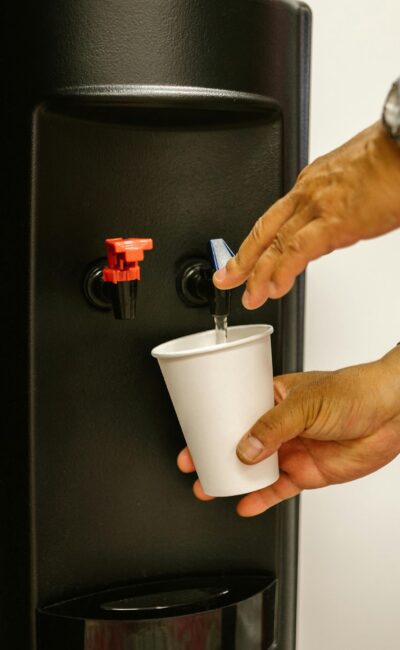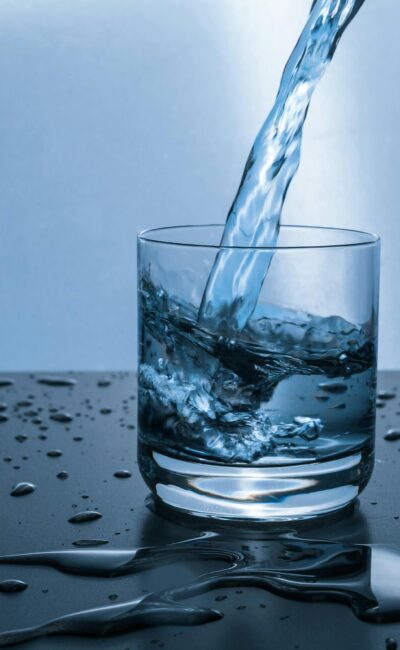It is no secret that water bottles are harmful to our planet, and any small amount of research will tell you that they are dangerous for us too. However, what may surprise you about one-time single-use plastic water bottles is not necessarily the impact they have today or tomorrow, but rather the continued effect that they will perpetually have over the next hundreds, and even thousands of years. For a moment, let’s focus on just one kind of plastic. The single-use plastic water bottle. It’s one of the most commonly used plastic items on earth and takes one water bottle approximately 450 years to completely decompose. When you take into account that the estimated number of single-use plastic water bottles consumed worldwide totals 500 billion every year, you begin to realize how massive this problem really is. These numbers are so large that they don’t even seem real, but they are alarmingly significant, and what’s worse is that these numbers are on the rise. So where do all these plastic bottles go? Surely they are dealt with in a manner that allows this volatile material to be reused in some capacity, or at the very least assists in the process of decomposition, but unfortunately, that is not the case. In the United States, it is reported that only 13% of single-use plastic water bottles are recycled each year. Considering that the US is responsible for 50 billion plastic bottles per year, this means that 43.5 billion single-use plastic water bottles are being thrown away. Best case scenario these water bottles end up in landfills, but much more often, the final resting place of these water bottles is a fate that is detrimental to our world’s greatest asset, our oceans.
Types of Plastic
In terms of human history, plastic pollutants contaminating the ocean is a recent problem–or perhaps one that is finally being brought to light. Regardless, as evident from the figures above, it is a problem that is being compounded and made worse over a rapid period of time with no long term solution in sight. Plastic, in all its many forms, is one of the slowest degrading materials on the planet and we as humans have developed a terrible habit of using it for everything. There are four main types of plastic that we use every day. Polyethylene terephthalate, commonly referred to as PET, is a polyester resin that when combined with other synthetic materials creates a thin, flexible, clear plastic, which is highly durable. This form of plastic is often used for soft drink and water bottles. The second form of plastic is high-density polyethylene, which, although thicker, more rigid, and typically opaque, is more prone to deterioration at high temperatures. This type of plastic is generally used to manufacture plastic jugs for milk and juice and is also the primary type of plastic found in single-use plastic bags. Polypropylene is the third most commonly used plastic you didn’t know you were using on a daily basis. This high-durability, high-flexibility plastic, can withstand extreme temperatures and as a result is often used for those items which we tend to use every day like chip bags, plastic straws, and microwaveable plastic containers. Polypropylene is the worst kind of plastic that we use, as it is the most resistant to natural or chemical corrosion. Due to its rigid molecular structure, it is almost impossible to recycle. The final most common type of everyday plastic is low-density polyethylene, which shares some chemical properties with its cousin high-density polyethylene but with a few key differences. Low-density polyethylene is best known for its resistance to chemicals and most specifically, its relation to oxygen as it acts as a barrier between letting chemicals like oxygen pass through its surface. As a result, this type of plastic is used for things like resealable plastic bags, plastic wrap, and garbage bags.
How Plastic Impacts Our Earth
Each of the plastics mentioned above has a detrimental effect on our natural environment, as most of these plastics are not recycled. An interesting fact about plastic is that it is estimated that in the United States, only 10% of the plastic that is produced and consumed is actually recycled. This means that all of this plastic is being thrown away, and the best possible scenario is that it is being burned in landfills creating additional airborne toxins that are contributing to the buildup of greenhouse gasses in the earth’s atmosphere. The worst case scenario for all this plastic is that it’s being scattered across the planet. Due to its lightweight, and high propensity for preservation, it is most likely that these plastics we use everyday end up in waterways which lead directly to our oceans.
How Plastic Harms The Ocean
There is a laundry list of why and how plastic waste in the ocean negatively impacts our planet as a whole, but to truly understand the effects of plastic pollution in the ocean let’s begin with a look at how each of the specific plastics listed above negatively impacts the ocean itself. In the case of low-density polyethylene, the same properties that make it desirable for protecting food against oxidation prevent the natural process of oceanic oxygen production to take place. When you take into consideration that 70% of the world’s oxygen is produced by marine plant life, you begin to realize that the plastic bags made of low-density polyethylene that are collecting on the surface of the world’s oceans are, and will continue, to limit the amount of oxygen that the world is physically able to produce. Similarly, the high-density polyethylene used to create milk jugs and plastic bags are lightweight, which make them perfect candidates to congregate and collect on the ocean’s surface. In the case of high-density polyethylene, single-use plastic bags are the biggest problem. These plastic bags do everything from suffocate marine life that accidentally gets tangled in them, to choking larger predators that mistake these bags as a food source. PET, or polyethylene terephthalate, is maybe the least harmful of the four, but it still manages to create plenty of chaos and detrimental impact. PET, like single-use plastic water bottles, is responsible for the most significant single amount of plastic trash of any of the previously mentioned types of plastic. The increasingly high volume of plastic waste in the ocean can be attributed to single-use plastic water bottles and the use of PET. If these four types of plastic were the four horsemen of the apocalypse, then polypropylene would be death. Polypropylene is responsible for the worst kind of plastic trash imaginable. Not only does this type of plastic deteriorate slower than any other type of plastic, but it is also used for those items which cause the most considerable amount of harm, chaos, and death. Most notably, plastic items like chip bags and plastic straws are responsible for countless numbers of oceanic fatalities as their small size, reflective shimmer, and colorful hues make them an irresistible lure to birds, fish, and turtles. Straws especially have been recently tied to an epidemic of suffocation for many different marine species, especially sea turtles, and the use of polypropylene is directly to blame.
Garbage Colonies
When the plastic that collects in our oceans isn’t actively killing marine life, it is quite literally just hanging out, often with each other. In fact, there is so much plastic trash in the ocean that has accumulated into one area that a particular part of the Pacific Ocean has earned the nickname “Trash Island.” Trash island, also known as the Great Pacific Garbage Patch, is the largest offshore accumulation site for trash and debris, most of which is comprised of the four types of plastics listed above. There are five of these floating maritime garbage colonies spread throughout the world. The Great Pacific Garbage Patch is located halfway between California and Hawaii and is estimated to be one million square miles comprised of approximately two million tons of plastic debris. This patch is the largest in the world followed by a similarly extensive collection in the Indian Ocean, a third smaller patch in the South Pacific, and two equally sized floating garbage patches in the North and South Atlantic respectively. These floating colonies of trash are formed because of patterns in the ocean currents. Floating debris, like pieces of plastic and other waste, is quickly swept along the surface via a major oceanic current until it reaches an isolated spot in the ocean where those ocean currents mingle and swirl creating a type of drain where all of this trash comes to rest. These large scale pollutant colonies are attractive to a variety of marine life as they offer the illusion of safety, rest, and a potential food source. However, an island made entirely of trash can be compared to a mirage in the desert, where instead of mistaking sand for an oasis of water, marine life mistakes plastic waste for food and shelter. Even aquatic birds are a victim to mistaking the garbage as food and can easily be entangled in things like plastic can rings or single-use plastic bags. The death and decay that comes as a result of the animals that perish at trash island only attract more marine life, which in turn feeds the cycle and continues the pattern.
It is not just marine life that is affected by the unacceptable amount of plastic debris in the oceans. As human beings, we are subject to serious adverse health risks that are associated with large amounts of plastic pollution in the ocean. Aside from surface plastic preventing the natural process of oxygen production, large numbers of surface plastic could also be impacting weather and current patterns. In addition, the introduction of plastic pieces of debris and trash into the ocean eventually affects coastal waterways and beaches. Aesthetically the collection of waste along coastlines is a disgusting sight, but biologically it creates and stimulates an ecosystem of bacteria like E. coli and other toxic agents that pollute and prevent the use of one of our largest and most precious food and water sources.
How You Can Help Save Our Oceans
The time has come to take action regarding the abomination that is plastic waste contaminating the ocean. While it is important to take political action and support legislation that reduces and regulates plastic consumption and waste; it is even more critical that we take it upon ourselves to make personal changes with a global impact. One of the most beneficial things you can do is to stop using single-use plastics such as water bottles and plastic straws. Remember that these plastics make up the most substantial majority of plastic debris that is contaminating our oceans and your commitment to cutting them from your life would help to prevent them from making their way into the sea and staying there for the next 500 years.
Another way to support the effort to reduce plastic pollution in our oceans is to implement a filtered water dispenser such as those provided by FloWater. Water filters such as these reduce the need for, and use of single-use plastic water bottles since they provide purified water on-demand. Flowater’s water filtration system takes in even further with its 7x Advanced Purification system that eliminates up to 99.9% of impurities found in tap water. Considering that 25% of bottled water comes from tap water and that the plastic from bottled water can cause serious health issues, giving up bottled water should be a no-brainer. FloWater is committed to making our world cleaner and healthier by changing the way the world drinks water. Because the world’s oceans are a very precious resource for humanity, and we should do everything we can to protect our blue planet while it is still blue.
Sources:
https://www.oceanunite.org/issues/marine-plastic-pollution/
https://www.marineinsight.com/environment/how-is-plastic-ruining-the-ocean/
https://www.earthday.org/2018/03/29/fact-sheet-single-use-plastics/
https://www.thoughtco.com/most-common-plastics-820351
https://www.theoceancleanup.com/great-pacific-garbage-patch/




